Sauerkraut and kimchi are both fermented vegetables that have been enjoyed for centuries in their respective cultures. They are both high in probiotics, which are beneficial bacteria that can improve gut health and support the immune system. You can make both at home or buy them at your local grocery store and use as the base in quite a few recipes.
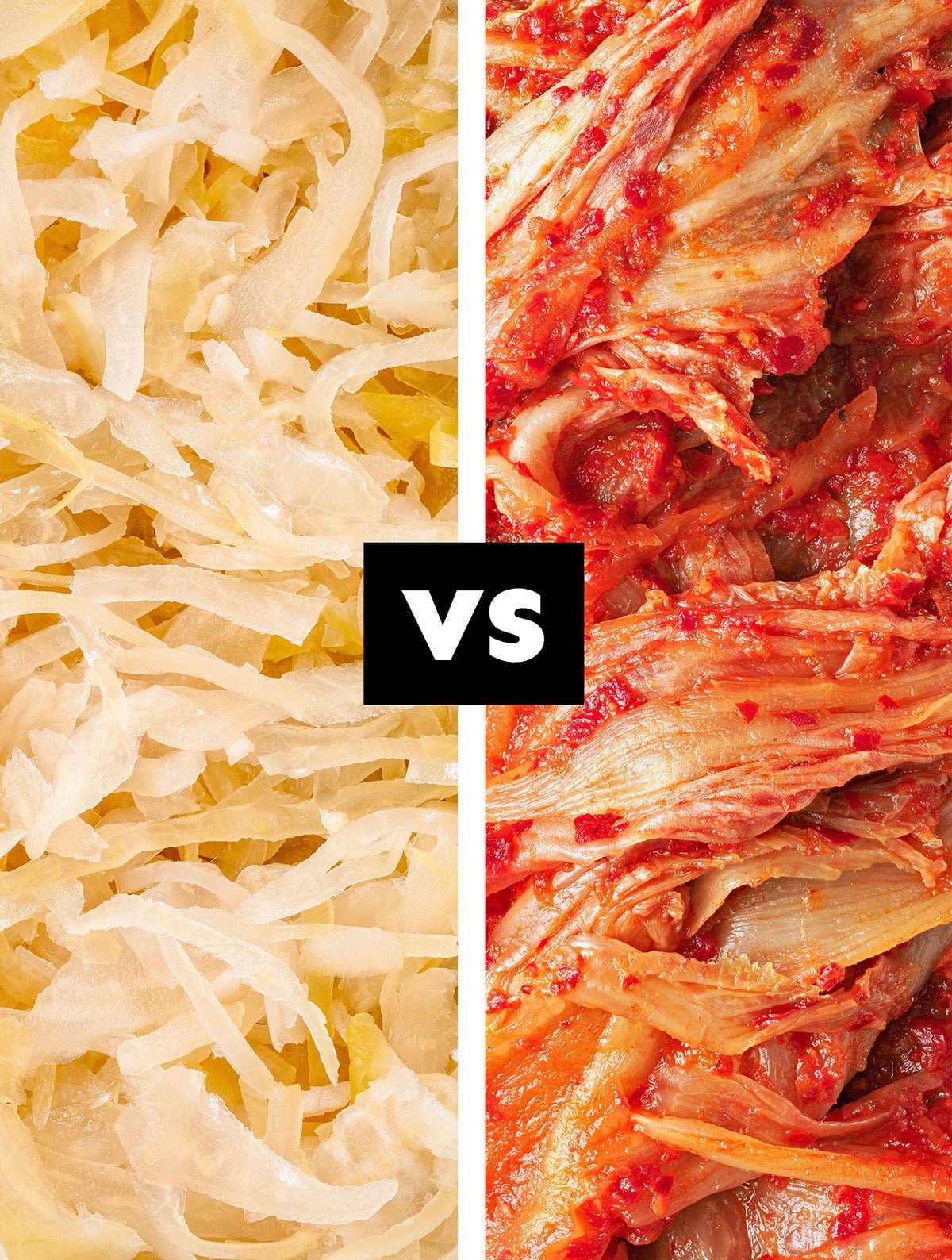
What is Sauerkraut?
Sauerkraut is a traditional German dish made from fermented cabbage. It has a distinctive sour flavor due to the fermentation process. The taste of sauerkraut can vary depending on factors such as the fermentation time and any additional ingredients used. In general, however, sauerkraut has a tangy, acidic, and slightly salty taste.
The fermentation process breaks down the natural sugars in the cabbage into lactic acid, which gives sauerkraut its sour taste. The texture of sauerkraut is typically crunchy and slightly crisp, although the texture can vary depending on the desired level of fermentation.
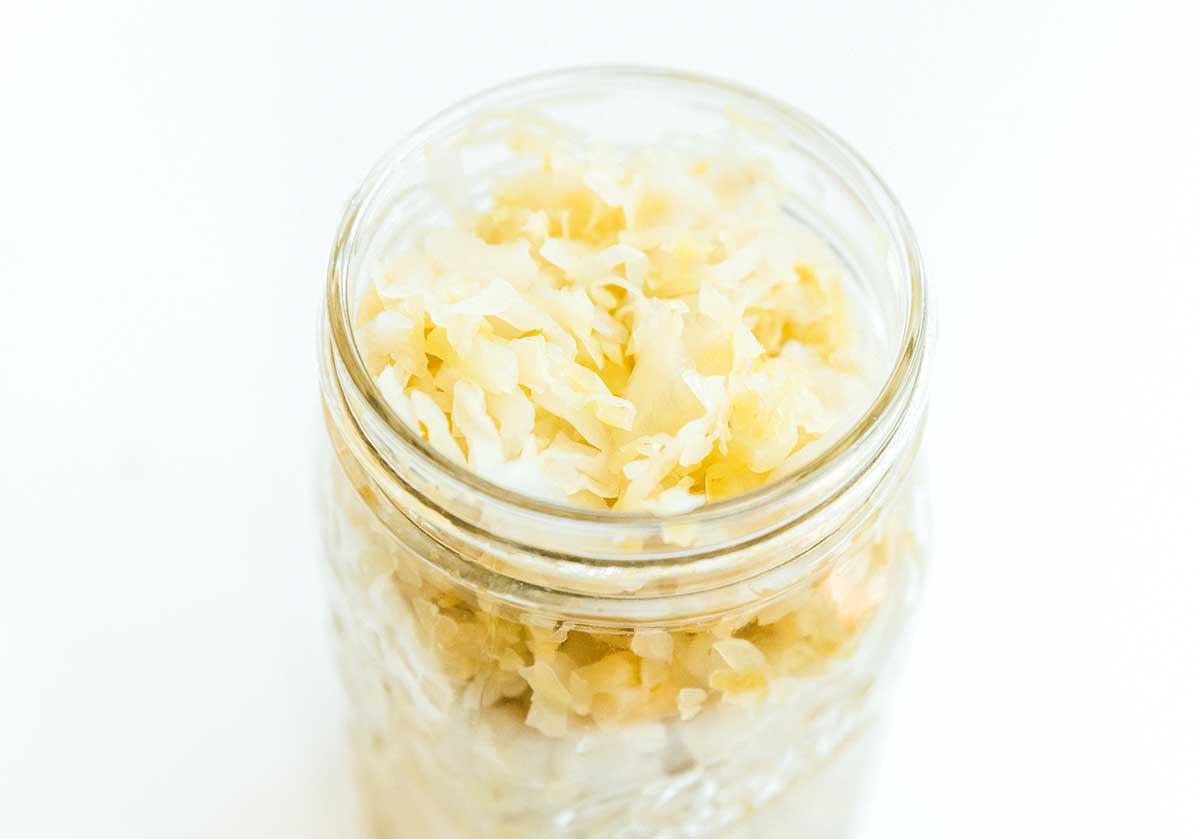
What is Kimchi?
Kimchi is a traditional Korean dish made by fermenting vegetables, most commonly napa cabbage, with a mixture of salt, garlic, ginger, chili pepper, and other seasonings. The taste of kimchi can vary depending on the specific recipe and the length of fermentation, but it generally has a unique and distinctive flavor profile.
The primary taste of kimchi is a combination of spicy, salty, and sour flavors. The chili peppers provide a noticeable level of spiciness, which can range from mild to very spicy, depending on personal preference and the recipe. The saltiness comes from the use of salt during the fermentation process, which helps to preserve the vegetables and enhance their flavor. The sourness is a result of the fermentation itself, as the natural bacteria break down the sugars in the vegetables and produce lactic acid.
In addition to these primary flavors, kimchi often has a strong umami taste. Umami is often described as a savory or meaty flavor, and it comes from the natural glutamates found in ingredients like fermented fish sauce, shrimp paste, or dried seafood, which are sometimes added to the kimchi recipe.
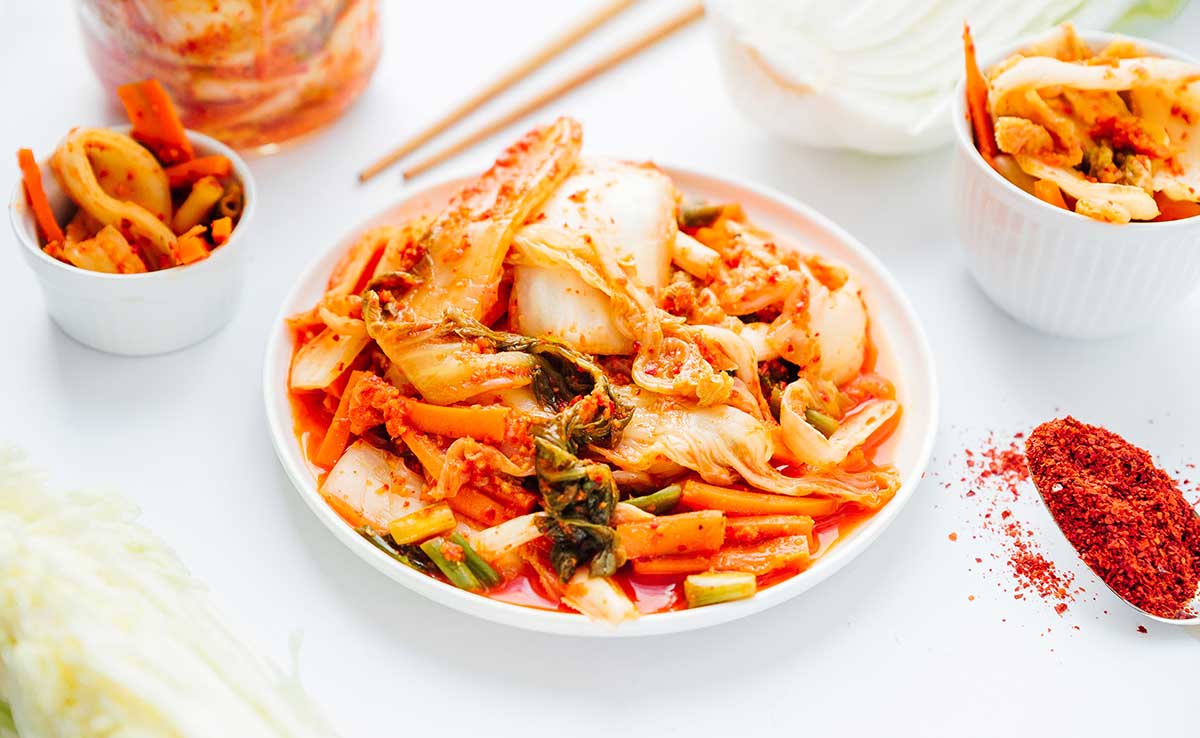
Flavor
Sauerkraut: Some people describe sauerkraut as having a tangy and vibrant flavor that adds a pleasant acidity to dishes. The taste of sauerkraut does not appeal to everyone, as its strong and distinctive flavor can be an acquired taste.
Kimchi: Overall, the taste of kimchi can be quite bold, vibrant, and complex. It is tangy, spicy, and pungent, with a depth of flavor that develops during the fermentation process. Some people may find it initially strong or intense, especially if they are not accustomed to fermented foods.
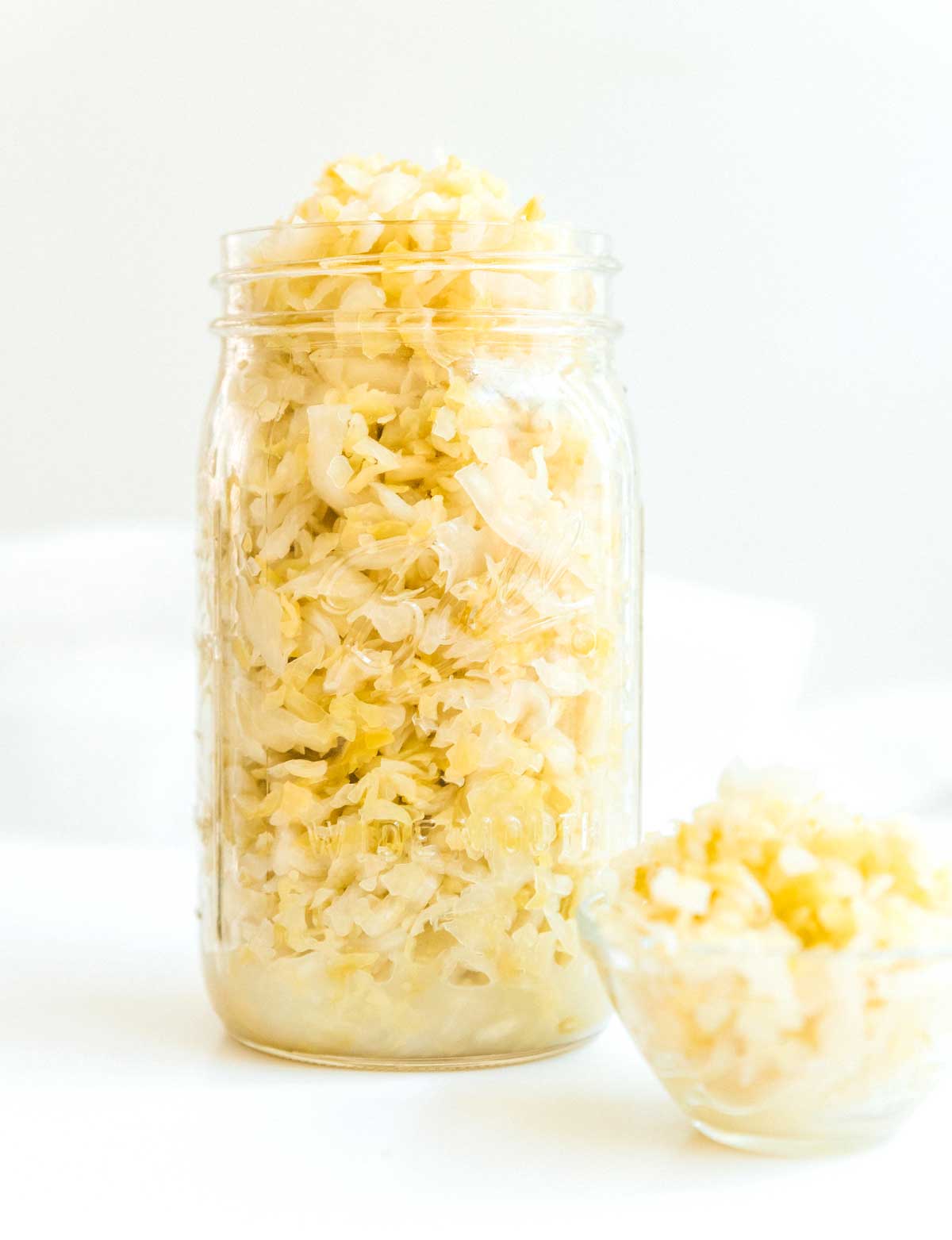
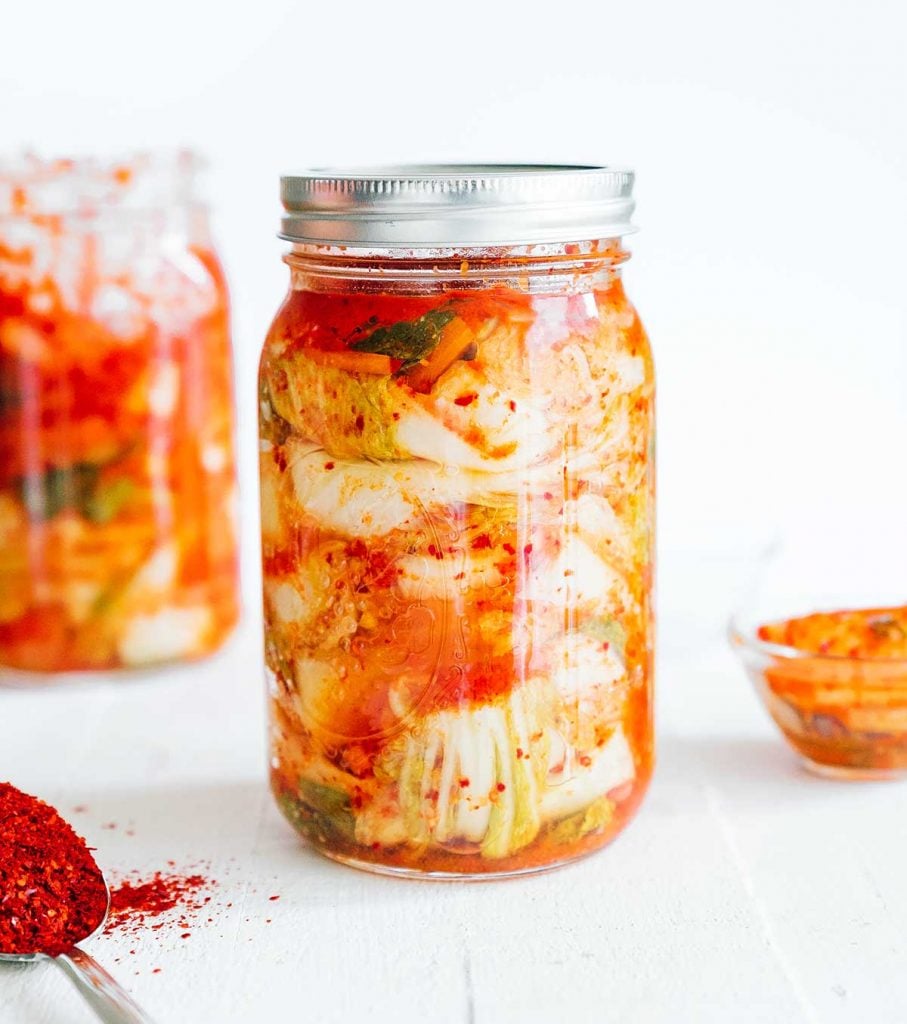
Uses
Sauerkraut can be enjoyed as a side dish, added to sandwiches, or used as a topping for hot dogs and sausages. Homemade sauerkraut is easy to make, and allows you to tweak to taste to your liking. If you want to work sauerkraut into a recipe or two have a look at this Sauerkraut Salad Recipe or perhaps Sauerkraut Soup.
Kimchi is frequently used as a side dish, but it can also be used to make soups, stews, and rice dishes. You can make Homemade Kimchi quite easily, and will probably save money in the process. If you want some unique ideas for using kimchi (store bought or homemade) to create other great cuisines, try one of these well tested recipes. Kimchi Fries, Kimchi Fried Rice or perhaps our favorite Kimchi Tempeh Tacos.
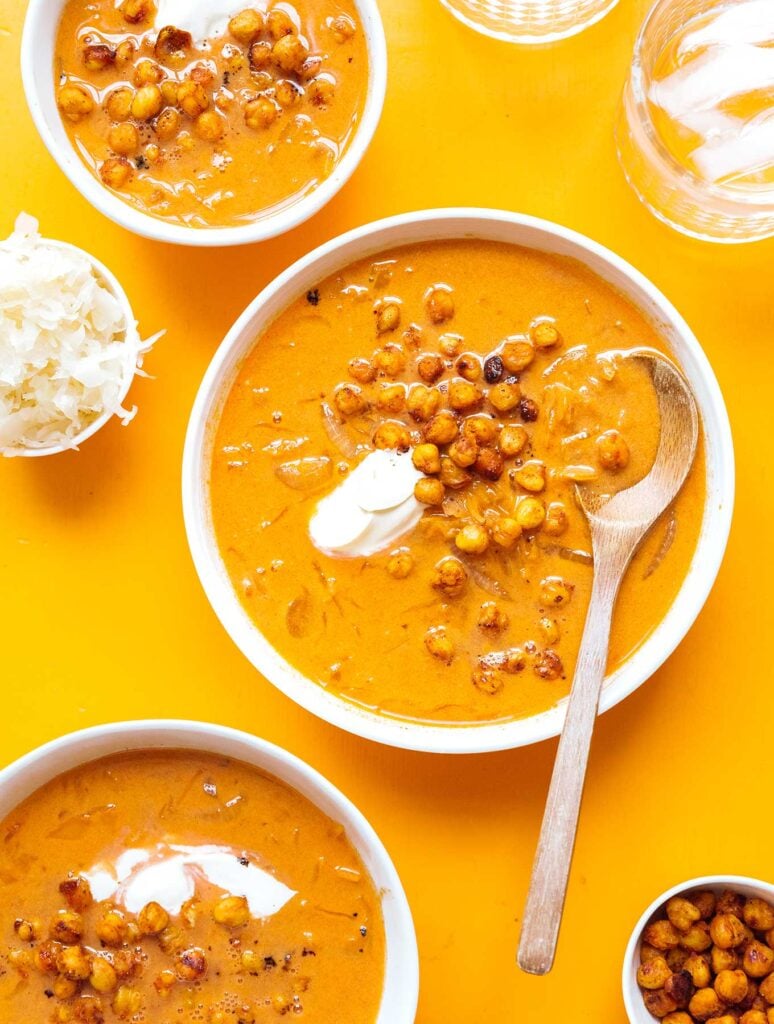
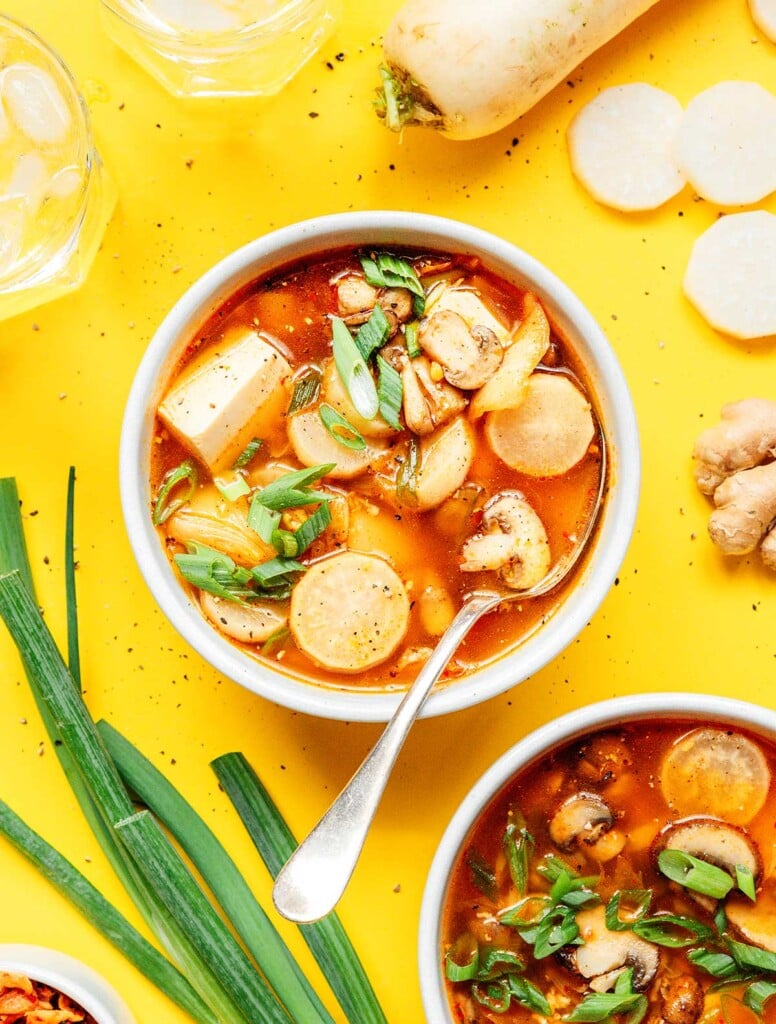
Nutrition
Both sauerkraut and kimchi are low calorie healthy foods that are packed with probiotics, thanks for the fermentation used to make them!
Sauerkraut is a low-calorie, higher-fiber food that brings a lot to the table health-wise. A mere 100 gram (about 3.5 ounce) serving of sauerkraut contains only 19 calories, but provides:
- 2.9g fiber
- 1g protein
- 24% of the RDA Vitamin C
- 8% of the RDA of Iron
- 4% of the RDA of Potassium
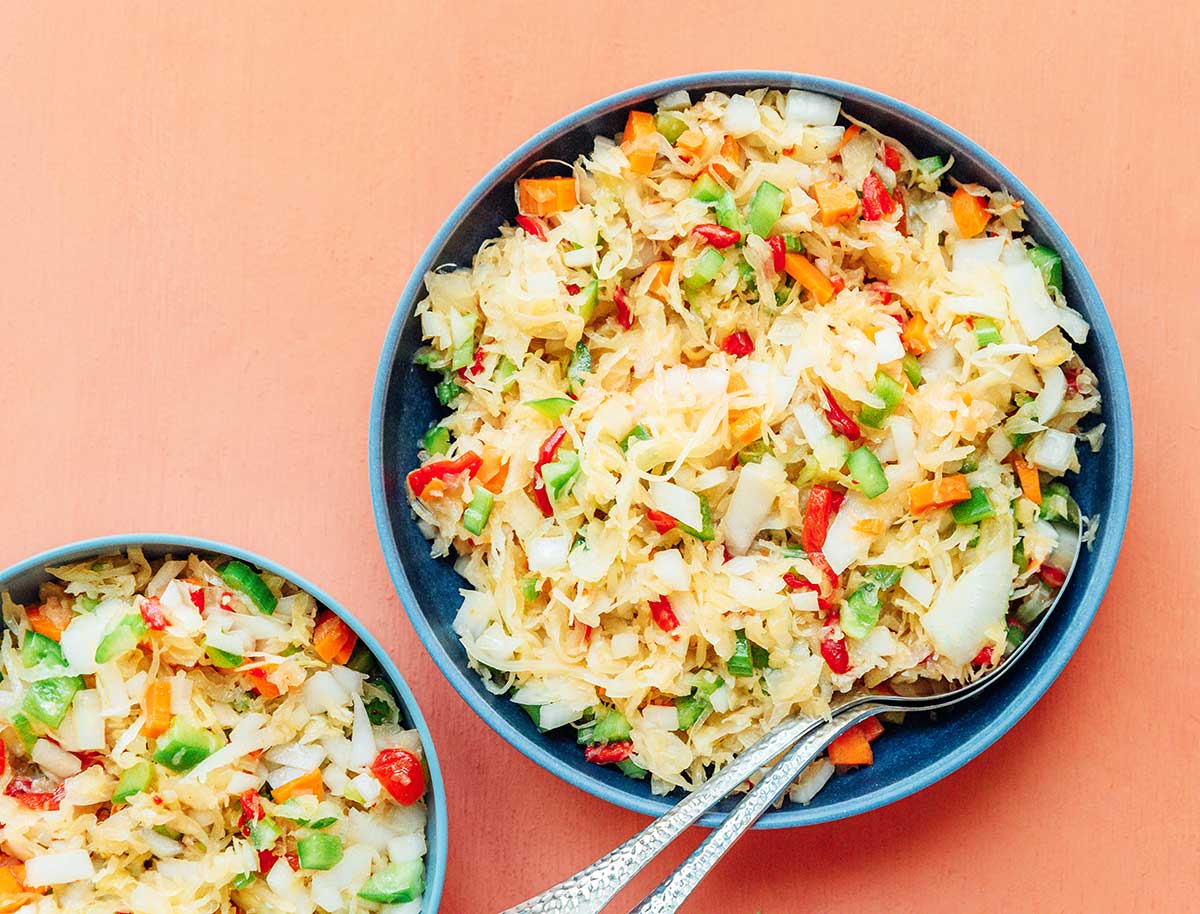
Kimchi is a nutritional super-star. It is high in vitamin C, and is also a good source of dietary fiber, and vitamins A, B1, B2, B3 and B6. It is also known for its probiotic properties. A 100g ( 3.5 ounce) serving of Kimchi contains only 15 calories, but provides:
- 1.6g fiber
- 1.1g protein
- 37% of the RDA Vitamin C
- 14% of the RDA of Iron
- 4% of the RDA of Potassium
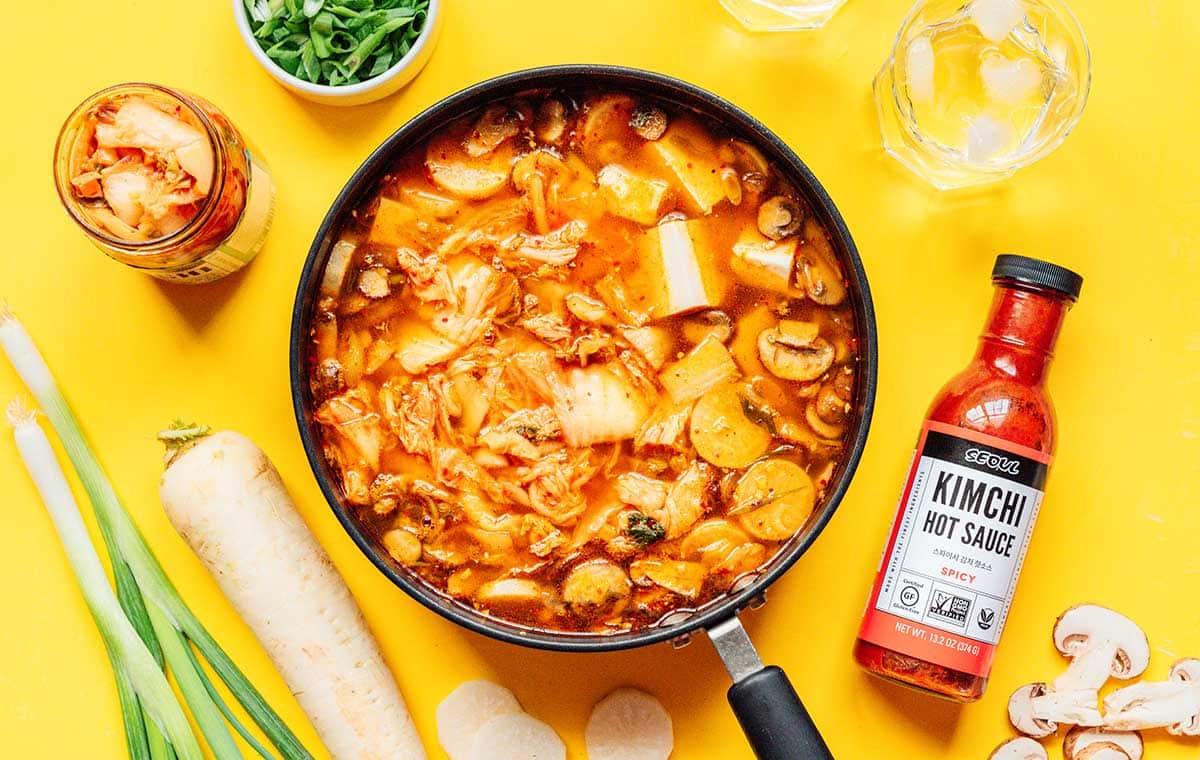
History of Sauerkraut
We said that Sauerkraut is a traditional German and Eastern European dish, but its origin can be traced back to ancient China, where it was made by pickling cabbage in rice wine. The dish eventually made its way to Europe probably along the Spice Road carried by ancient traders. Once it arrived in Europe it became popular in Germany, Poland, and other Eastern European countries.
During the Middle Ages, sauerkraut was considered a valuable food source, particularly during the winter months when fresh fruits and vegetables were scarce and by scarce we mean unavailable to most people. The fermentation process used to make sauerkraut not only preserved the cabbage but also created a tangy, slightly sour flavor that was highly prized.
In the 18th century, sauerkraut began to be produced on a large scale and was exported to other countries. It became a staple food for sailors and was often served on ships to prevent scurvy, a disease caused by a lack of vitamin C. As it kept well Army’s also relied on it for the same reason.
Sauerkraut continued to be popular in Germany and Eastern Europe, and it is still an essential ingredient in many traditional dishes such as sausages, sandwiches, and stews. It has also become popular in other countries, and it is widely available in supermarkets today in Europe and the USA. If you want to try a unique sandwich with kraut, try this Vegetarian Reuben Sandwich.
In recent years, the benefits of probiotics have been widely studied, and sauerkraut has become a popular food among those interested in maintaining gut health. It’s also a popular food in the fermentation movement, where many people are turning to traditional methods of food preservation as a way to improve their health.
History of Kimchi
Kimchi is a traditional Korean dish made from fermented vegetables, most commonly napa cabbage, radishes, and other vegetables. The origins of kimchi can be traced back to ancient Korea, where it was made by pickling vegetables in salt, chili peppers, and other seasonings.
During the Three Kingdoms period of Korea (1st century BCE to 7th century CE), kimchi was called “chonggak-kimchi” and was made with scallions and radish. During the Goryeo Dynasty (10th century to 14th century), the dish became known as “baechu-kimchi” and was made with napa cabbage, a vegetable that was introduced to the Korean peninsula during the Chinese Han Dynasty (206 BCE to 220 CE).
The process of fermentation used to make kimchi not only preserved the vegetables but also created a bold and spicy flavor that was highly prized. Kimchi was traditionally made in large batches and stored underground in earthenware jars to ferment. There are still many Koreans today who use the underground storage method to make their kimchi.
In the past centuries, kimchi has been an essential part of Korean cuisine and culture, it’s a staple food served with almost every meal. It’s also considered a symbol of Korean identity and has been recognized as a UNESCO Intangible Cultural Heritage. Okay, that was probably way more history than you wanted, but here at Live Eat Learn we think that knowing where ingredients came from helps us understand what to do with them.
So you see, Kimchi and Sauerkraut are more similar than different. They are both fermented vegetable dishes that came to popularity half a world apart, but are now worldwide favorites. You can buy a wonderful kimchi quite cheaply at COSTCO and get sauerkraut for a couple of dollars at any grocery store. They are made by different varieties of cabbage, but both are rich in vitamins, low calorie, and have gut friendly probiotics. The difference between the two really comes down to which taste do you like best?
We hope this short article on the differences and similarities of kimchi and sauerkraut has been helpful, and as always Happy Cooking.
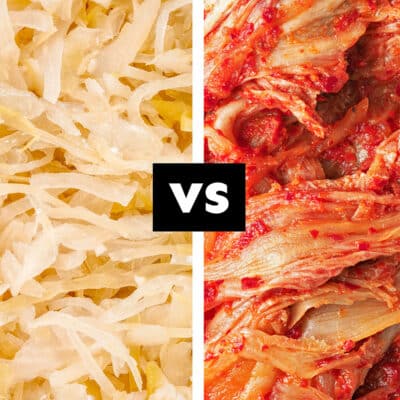

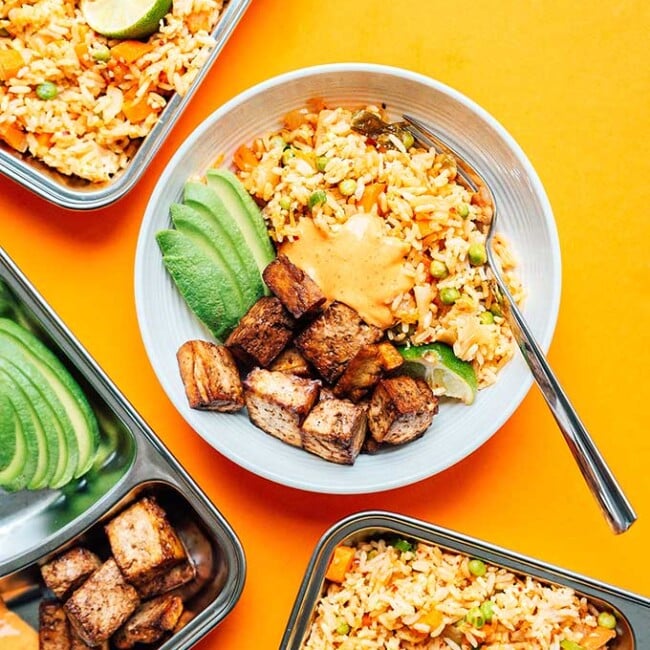
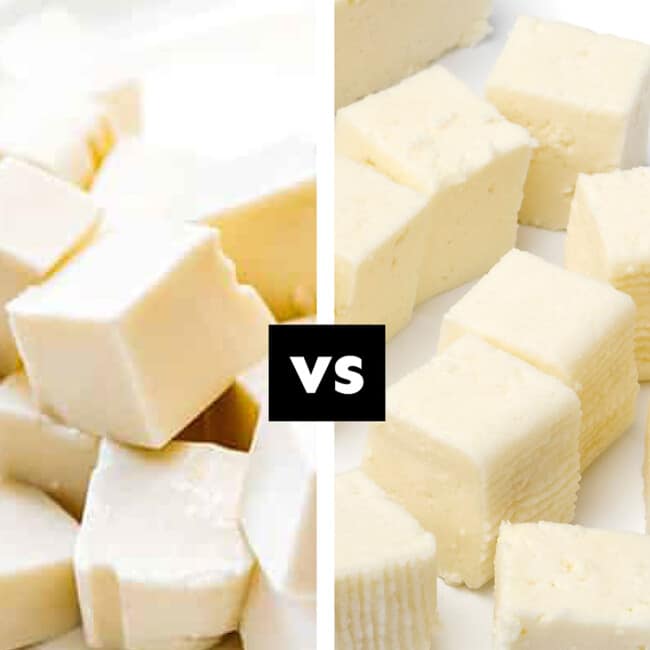
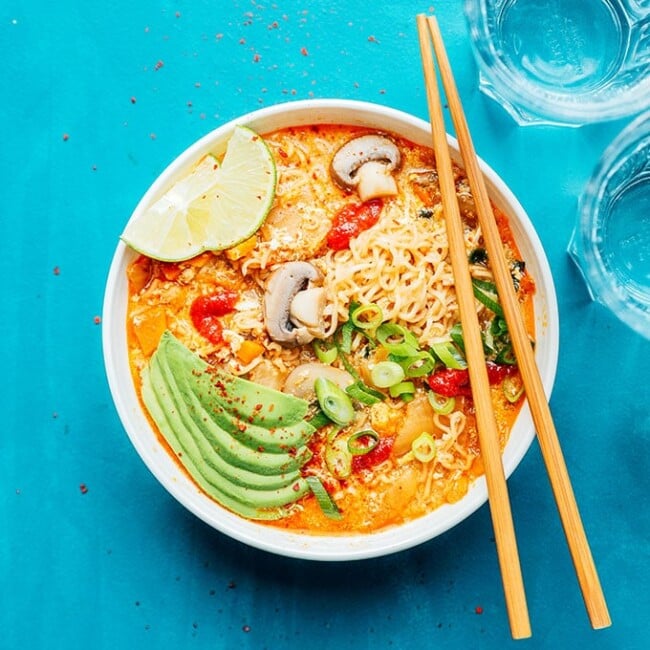
Cliff Ellerton says
Love Sauerkraut, Tried to make it once. Saw some blue Mold on surface and tossed the whole batch out. Haven’t tried again. Not sure what went wrong
Cliff
Sarah Bond says
You probably didn’t submerge the cabbage fully! If the cabbage is protruding from the liquid at all (exposed to oxygen) it greatly increases the chances of mold. Try using a fermentation weight next time!
Silvia says
Can i put sriracha in kimchi instead of chili paste?
Sarah Bond says
I haven’t tried but I think it would work! 😀
Michelle says
No. You can not.